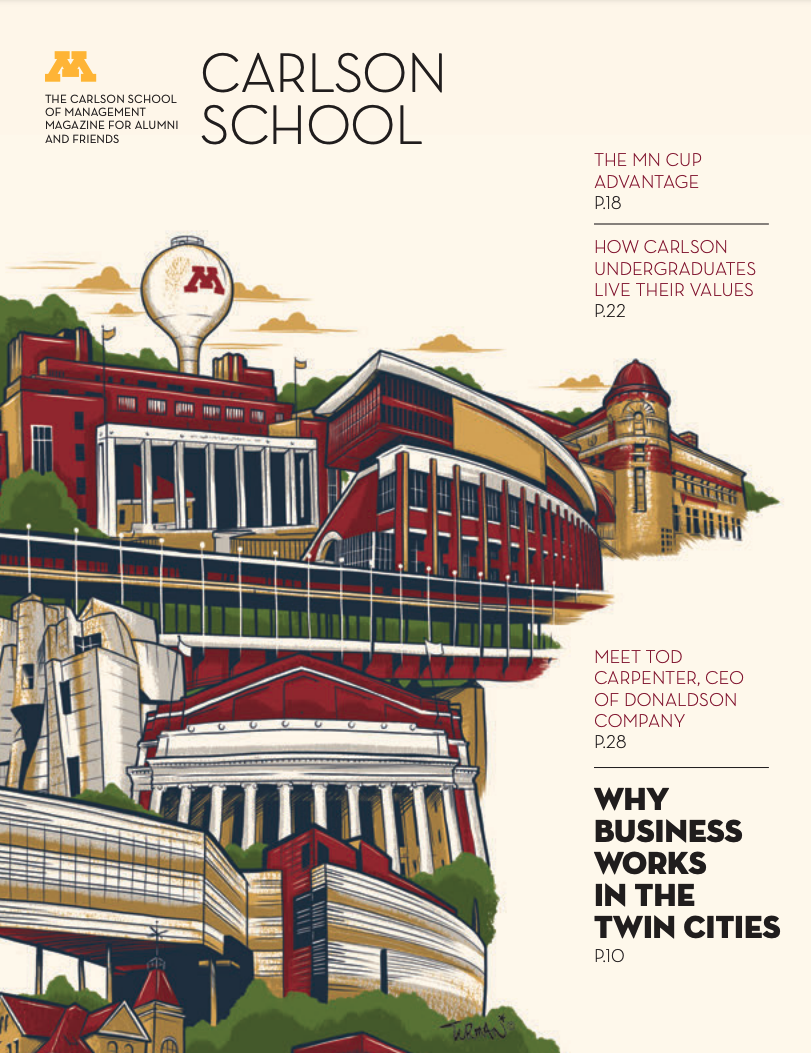
Ximin (Natalie) Huang Seeks Out Electronics Recycling Solutions
Thursday, April 18, 2019
We live in a connected world, one that’s built around our ever-growing cache of electronic gadgets. But every incremental technological advance renders existing products outdated, and once those old electronics are deemed disposable, they have to go somewhere—too often, the garbage.
In 2016, just 20 percent of the 44.7 million metric tons of electronic waste generated worldwide was appropriately recycled, according to a report by United Nations University, the International Telecommunication Union, and the International Solid Waste Association.
Supply Chain and Operations Assistant Professor Ximin (Natalie) Huang hopes to boost that percentage. Through her research, Huang is uncovering insights into how legislation can encourage and optimize electronics recycling, starting with efforts in Minnesota.
“It’s such a huge volume,” she says of the electronics recycling industry. “It has a very significant impact, both economically and environmentally.”
Broadly speaking, Huang studies supply chain management and sustainable operations. But she’s particularly interested in the effects of legislation on companies’ sustainability practices, a pursuit that led her to examine extended producer responsibility (EPR) policies. These statutes, enacted at the state level in the United States, hold companies responsible for their products when they reach the end of their life cycles. In short, EPR legislation sets collection and recycling targets that companies must reach.
Minnesota’s EPR approach—codified in the Minnesota Electronics Recycling Act in 2007—happens to be one extreme in the spectrum of state policies, which caught Huang’s attention when she was a PhD student at Georgia Tech.
While Minnesota law mandates strict collection and recycling marks, it provides companies with flexibility in reaching those numbers through a range of methods: directly collecting and recycling, purchasing pounds of recycled electronic devices, using banked credits from a previous year, or paying a fee to cover any deficit.
“It’s very market-driven in the sense that the legislation almost only defines the ultimate goal for producers,” Huang says. “But then at the same time it allows the market forces to figure the other details out.”
“Sometimes you have all these really well-intended goals—I want more recycling, more environmentally friendly product designs—but it’s really how you write the legislation that is key. These operational details are really important to make sure you are incentivizing the involved stakeholders to act in a desired way.”
The policy has proven effective. Minnesota has consistently ranked among the top states for electronics recycling collection rates. And since the law’s enactment, more than 300 million pounds of electronic waste has been collected and recycled across the state.
Huang and her collaborators used Minnesota’s policy as a case study for what they dubbed “market-based” EPR. They drew upon public data and interviewed a range of stakeholders, including recycling companies, nonprofit environmental organizations, and local governments. The Minnesota Pollution Control Agency, in particular, was a key source of information.
“While the legislation requirements are publicly available, we can only have the firsthand information regarding the implementation outcomes and how the operational details can play a role from the conversations and interactions we had,” Huang says.
The researchers published their findings last year in the Journal of Industrial Ecology. The gist: While the Minnesota act delivered stellar collection rates and allowed companies to pursue cost efficiencies, it wasn’t sufficiently effective at boosting recycling in rural areas and left too much of the burden on local municipalities for handling higher-cost items, such as CRT TVs and computer monitors.
As it turned out, while Huang’s group was finalizing its work, the state amended the law in 2016, with some changes greatly enhancing the incentive for collection in areas outside of the Twin Cities metro.
“We think the direction of these changes aligns with some of our suggestions, so we are very excited to see the outcome,” she says.
Huang has since expanded her work on EPR legislation, examining how policies can influence product design by sometimes unintentionally forcing companies to weigh durability against recyclability. She’s also looking at situations where voluntary compliance, in which companies take preemptive action to head off legislation, could be the most prudent strategy in electronics and plastic recycling. Her insights on EPR policies also carry over nicely to analyzing laws governing carbon emissions.
Admirable end goals aren’t enough; to be effective, legislation needs the proper operational nuances to avoid unintended consequences, Huang says.
“Sometimes you have all these really well-intended goals—I want more recycling, more environmentally friendly product designs—but it’s really how you write the legislation that is key,” Huang says. “These operational details are really important to make sure you are incentivizing the involved stakeholders to act in a desired way.”
Huang hopes her work can sharpen those details—for the sake of companies, policymakers, and the environment.
“For me, it’s very satisfying if my work can help with doing business in a more sustainable way, because for a lot of companies or organizations, environmental management or responsible operations is almost like an add-on—they have to do it because of legislation or market forces,” she says. “But if we are willing to actually expand our horizon of finances, there is a lot of potential to achieve a win-win scenario, where we do it in a way that’s both greener and is economically efficient.”
